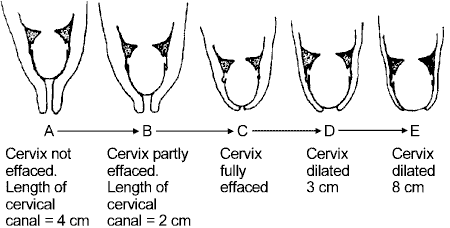This is a common scenario seen in triage. Patient is in the latent phase of labor and has not yet reached the active phase (more than 4 cm).
A prolonged latent phase is defined as >20 hours for nulliparas and >14 hours for multiparas, and may be treated with rest or augmentation of labor.
Artificial rupture of membranes is not recommended in the latent phase as it places the patient at increased risk of infection. Cervical dilation or laminaria placement are not indicated.
Indication of labor induction
Benefits of delivery outweighs the risks of continuing the pregnancy
- Maternal: fetal demise, prolonged pregnancy, chorioamnionitis, severe preeclampsia, eclampsia
- Fetal: IUGR, abnormal fetal testing, infection









